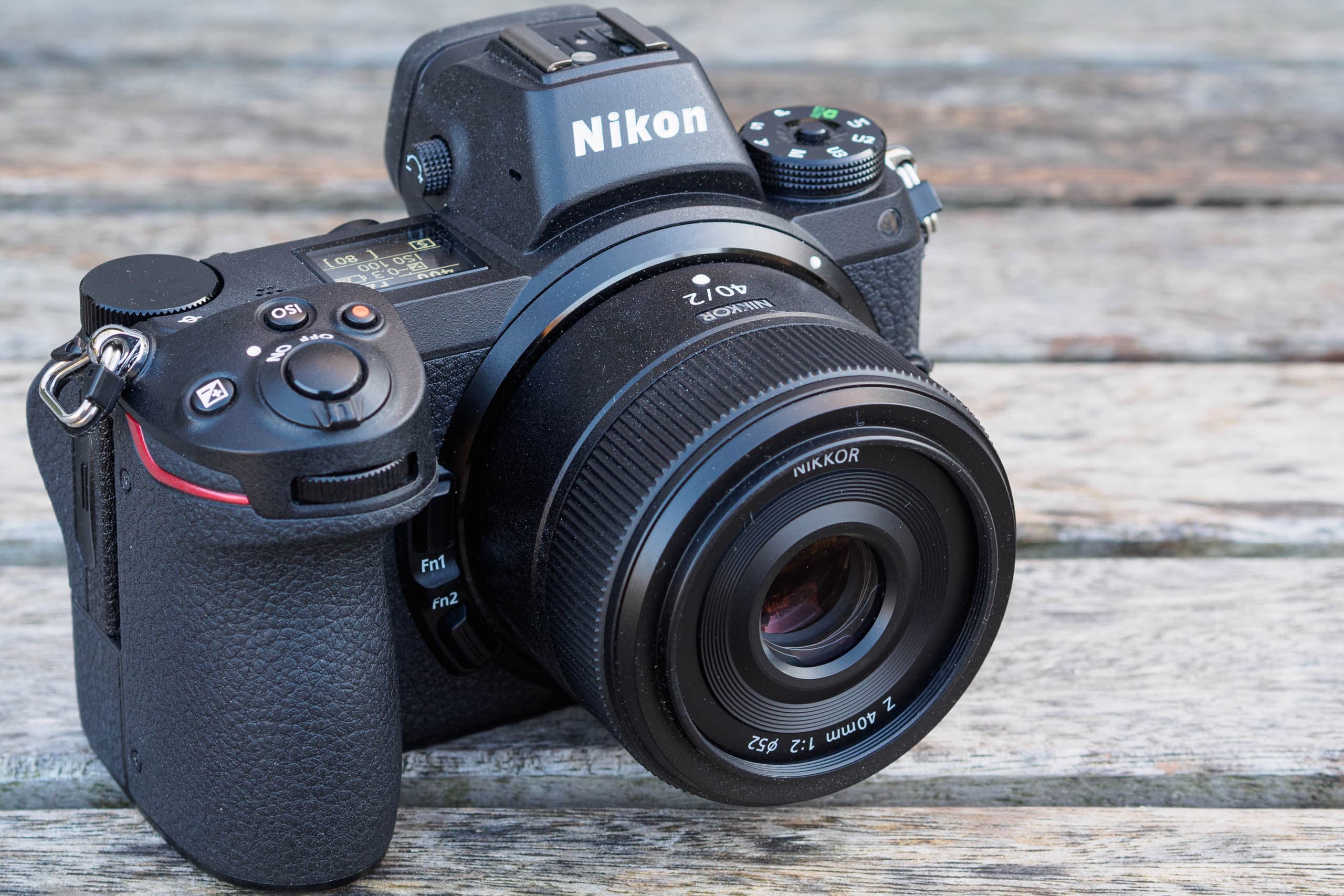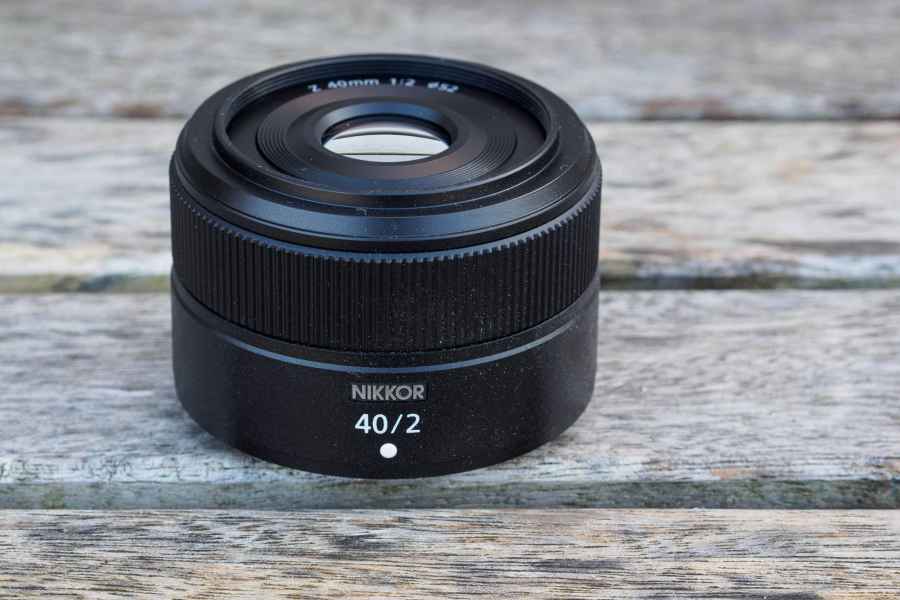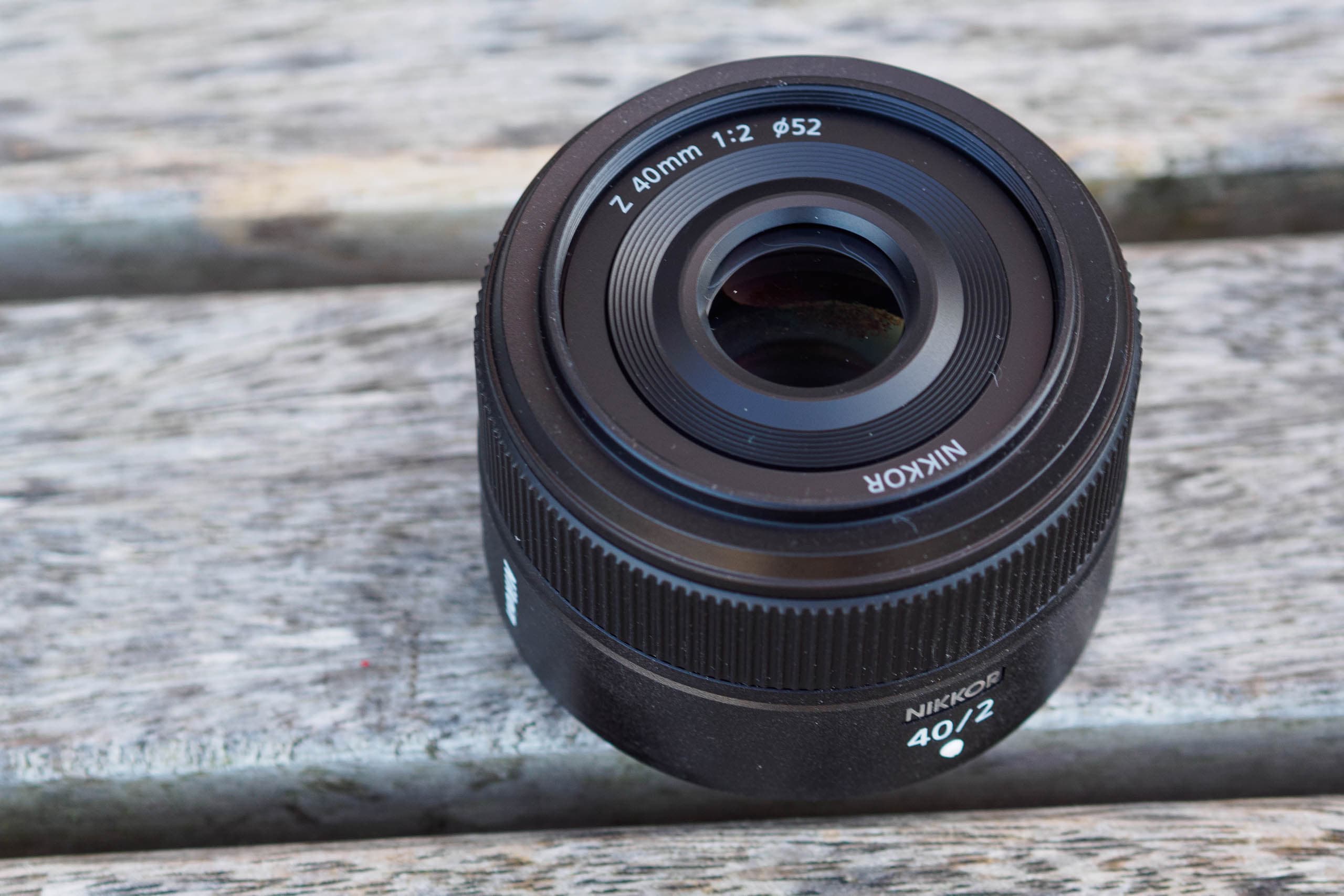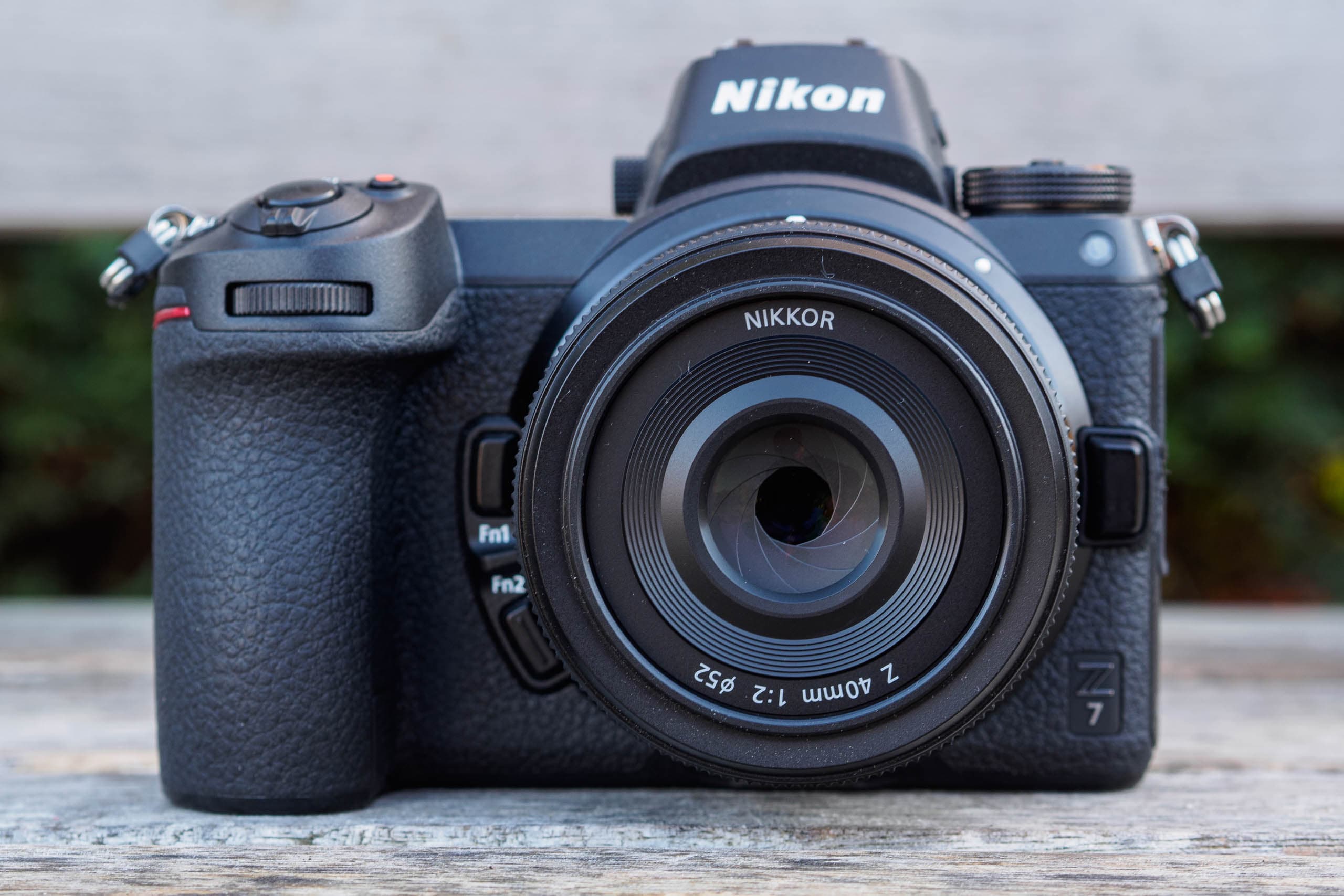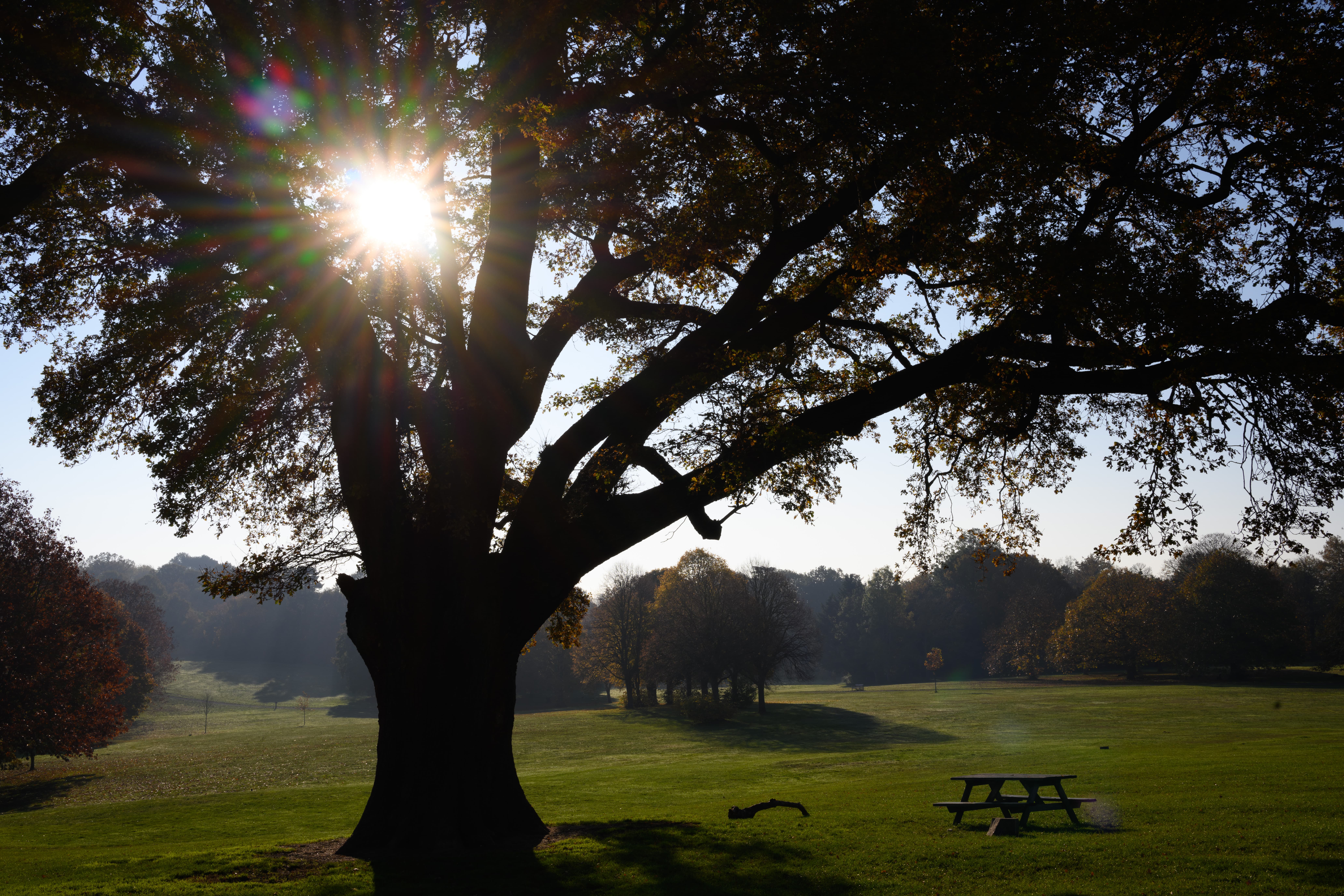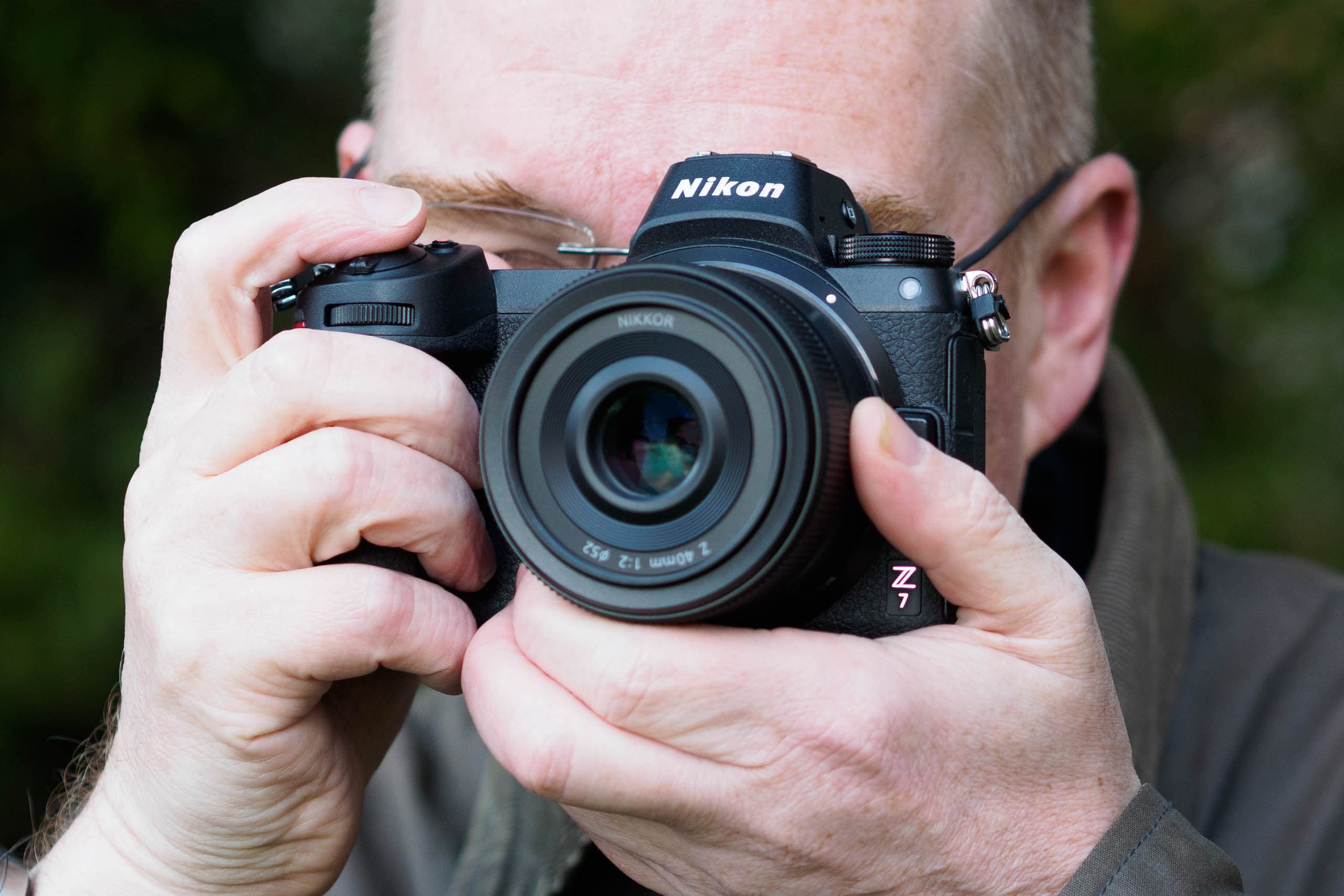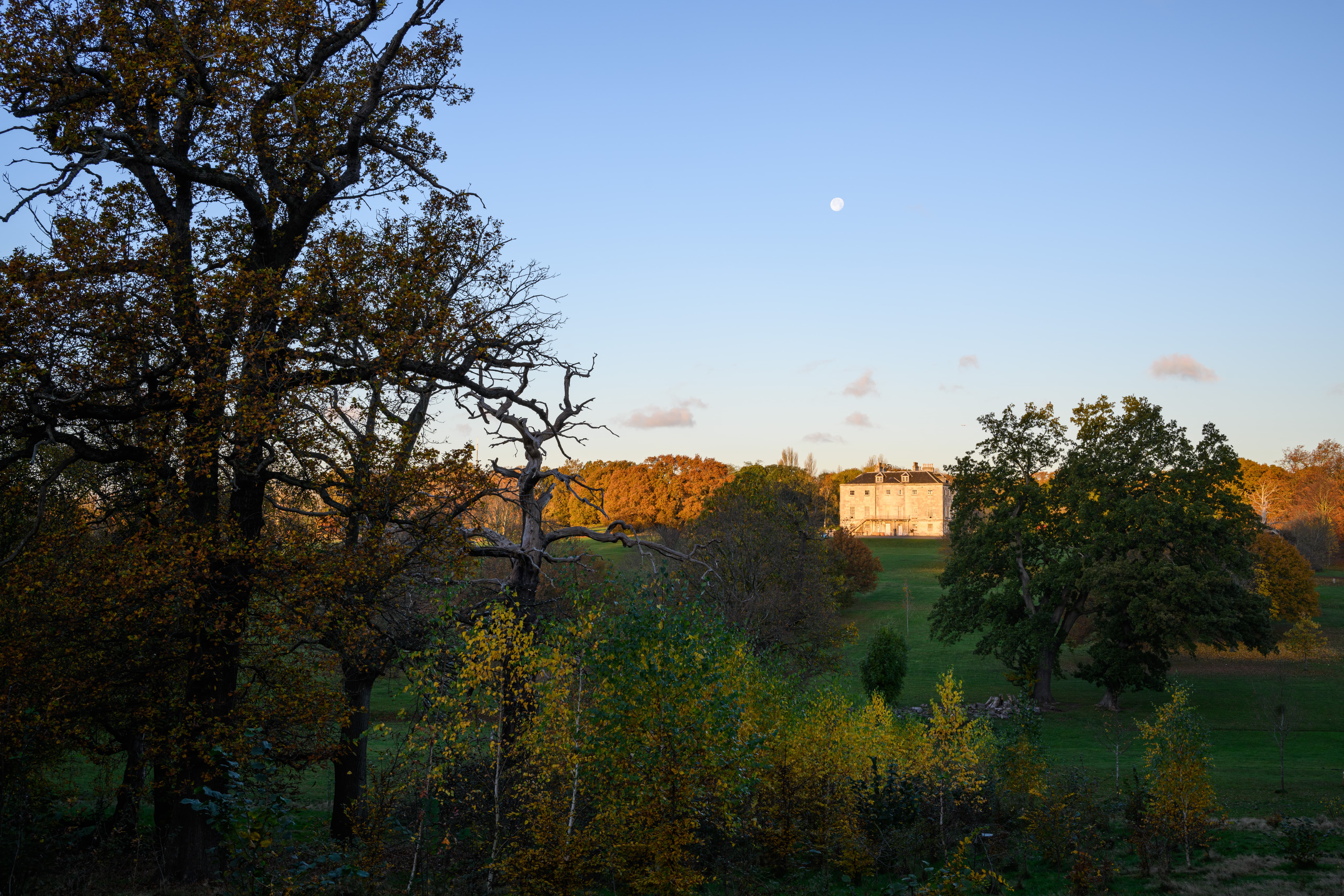When Nikon launched its full-frame mirrorless Z system in late 2018, it kicked off with three lenses, namely a 24-70mm f/4 zoom alongside 35mm f/1.8 and 50mm f/1.8 primes. All were part of a new premium S line, promising top-notch optics while being smaller, lighter and more affordable than the high-end, large-aperture lenses conventionally offered for DSLRs. But with launch prices of £849 and £599 respectively, those two f/1.8 primes still weren’t exactly cheap.
This is where the new Nikkor Z 40mm f/2 comes in, with its price tag of just £249. In effect, it does the much same job in the Z lens range as the old AF-S Nikkor 50mm f/1.8G did for F-mount DSLRs, promising strong optical performance and a large aperture at a keen price.
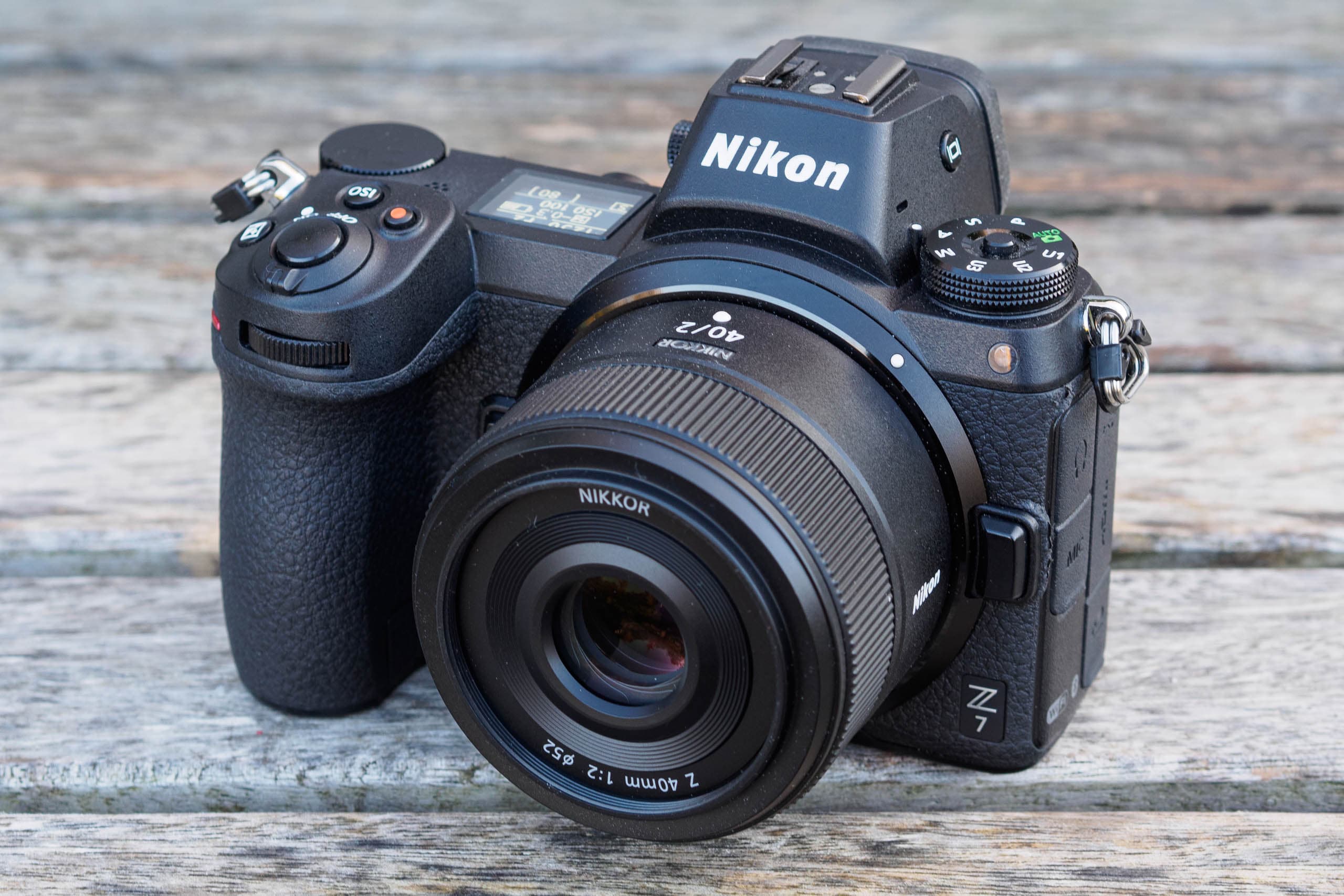
Nikon’s Nikkor Z 40mm f/2 is designed as an everyday standard prime for its full-frame mirrorless Z-system cameras
With its 40mm focal length, this lens slots neatly in between its 35mm and 50mm siblings in terms of angle of view. It may be an unfamiliar focal length to DSLR users, but has seen something of a surge in popularity recently. Many photographers find the 40-45mm range to represent the perfect ‘standard’ lens, offering a very natural perspective to images.
Probably the most similar lens available for full-frame mirrorless cameras is the similarly lightweight and inexpensive Samyang AF 45mm F1.8 FE. But we’ve also seen the compact, metal-barrelled Sony FE 40mm F2.5 G and the premium, close-focusing Zeiss Batis 40mm F2 CF. None of these are available in Nikon Z mount, but they do provide a basis for comparison. So how does Nikon’s budget offering measure up?
Nikon Z 40mm f/2: Features
Unsurprisingly, one area where the 40mm f/2 differs from its more expensive stablemates lies with the complexity of its optics. It employs 6 elements arranged in 4 groups, just half as many as are used by the Nikkor Z 50mm f/1.8 S.
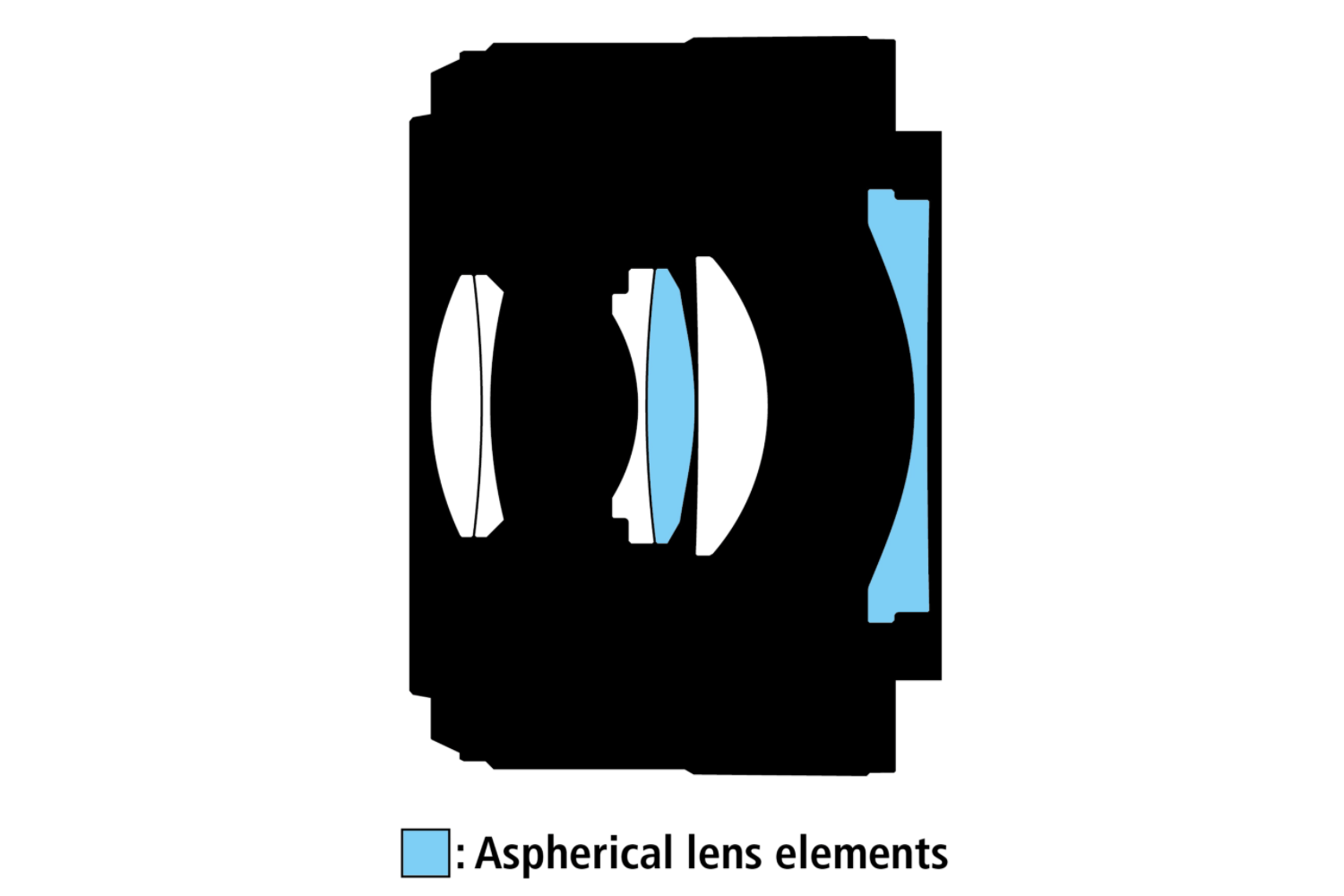
Nikon Nikkor Z 40mm f/2 optical design: 6 elements in 4 groups, including 2 aspherical
But while this formula might sound superficially similar to traditional 50mm f/1.8s for DSLRs, the optical design is in fact rather different. It employs a relatively small front element and a much larger rear element, a common pattern with mirrorless-optimised lenses which aims to optimise illumination of the image sensor all the way into its corners. Nikon has also included two aspherical elements to improve cross-frame sharpness.
The lens employs an internal focus design driven by a quiet stepper motor, with a minimum object distance of just 29cm. This approach has also enabled Nikon to include sealing against dust and moisture, which is rare at this price point and very welcome. A 52mm front thread allows filters to be attached, but there’s no separate mount for a lens hood.
Nikon has included an aperture diaphragm with 9 rounded blades, which unusually is very visible towards the front of the optical system. The idea is to give attractively blurred backgrounds when stopped down a little. It should also give 18-ray sun stars, for those who are concerned about such things.
Nikkor Z 40mm f/2: Build and Handling
Another area where Nikon has saved costs becomes evident when you examine the lens. Not only is the barrel constructed of lightweight but sturdy plastics, but so is the mount. This is always a controversial approach, but happily it doesn’t affect how easily the lens can be swapped on and off the camera.
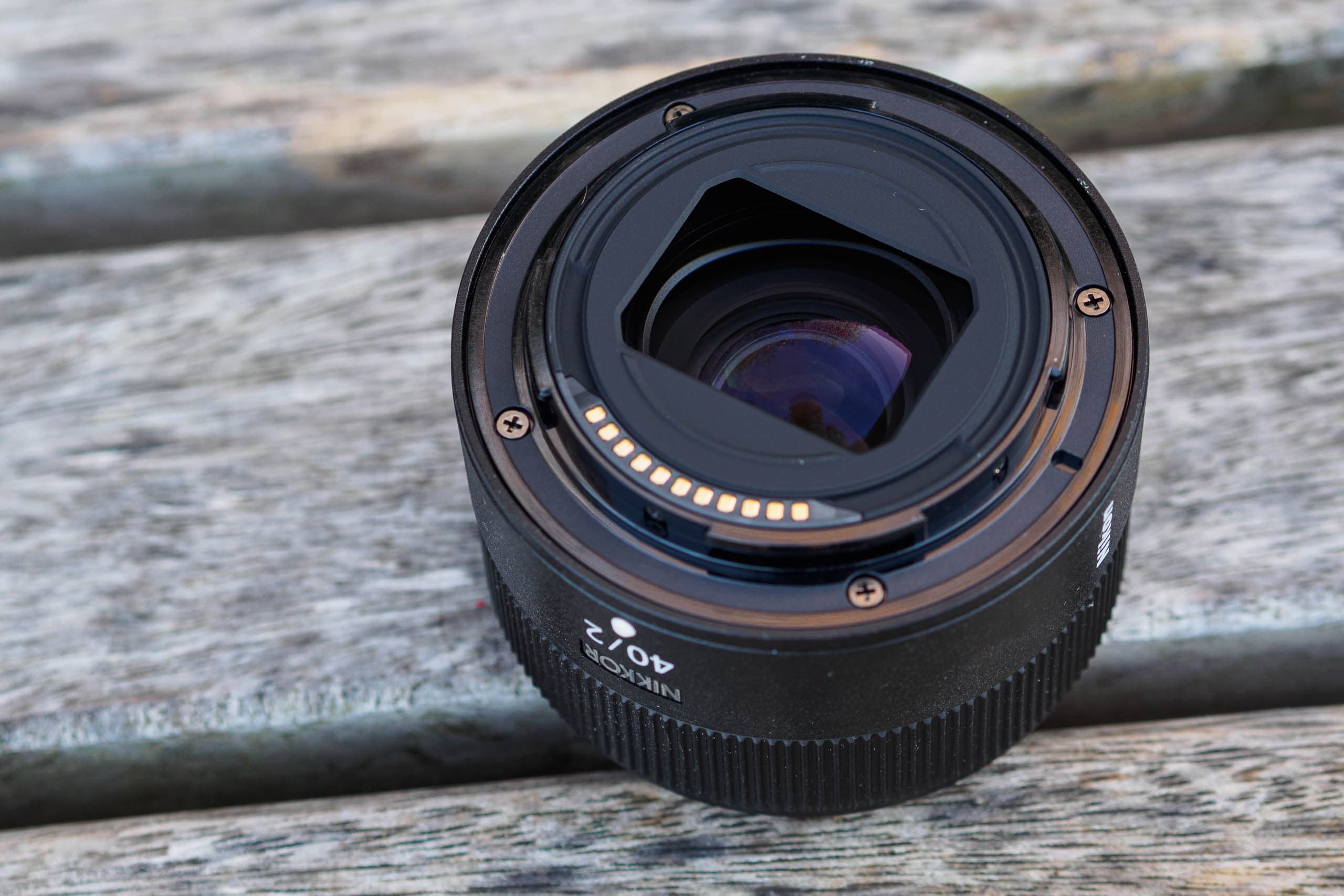
The lens employs a plastic mount, with the outer barrel overhanging by about 1mm to provide a barrier against dust and water getting into the camera
There’s no rubber O-ring seal at the back; instead, the outer barrel slightly overhangs the mount surface, to form a physical barrier against water getting into the camera.
This is also a very simple design in terms of controls. There’s just a broad manual-focus ring onboard that has a textured plastic grip and rotates smoothly without any end-stops. As usual with Nikon, it can be re-assigned from the camera to control the aperture, ISO or exposure compensation.

The manual focus ring can also be used to change exposure settings, but it’s very easy to nudge and throw them off accidentally
However, as the focus ring is the natural place to grasp the lens with your left hand and lacks any click stops, I found it far too easy to nudge accidentally. I’d rather use the camera’s dials to change exposure settings instead.
Of course, the big attraction of the 40mm f/2 is its size and weight. At 45.5mm in length and 170g, only the similarly designed Nikkor Z 28mm f/2.8 is smaller within Nikon’s full-frame Z-mount range. Compared to the 50mm f/1.8 S, the 40mm f/2 is half the weight and just a little over half the length.
On the Nikon Z 7 body I used for testing, you hardly even notice it’s there. It’s the kind of lens that you can throw in your bag and carry around all way without a second thought, which makes it perfect for travelling light.
Nikon 40mm f/2: Autofocus
One compromise that’s often made with inexpensive lenses is autofocus speed. But that’s not really the case here, thanks of the internal focus design. Instead, the lens is generally very snappy, autofocusing silently and accurately wherever you tell it to. I did occasionally find it refused to focus for no apparent reason, mostly when trying to get it to shift between distant and close-up subjects. But this didn’t happen often enough to be seriously troublesome.

Autofocus is reasonably fast, silent, and accurate. Nikon Z 7, Nikon Z 40mm f/2, 1/320sec at f/2, ISO 400; 20MP APS-C crop (60mm equivalent)
If you do find yourself needing to tweak focus manually, you’ll have to engage this from the camera, as there’s no focus mode switch on the lens itself. While the focus ring works electronically rather than mechanically, manual focus still responds promptly and intuitively. Turning the ring brings up a basic distance scale in the camera’s viewfinder, but for the most accurate results, it’s best to engage magnified live view using the requisite button on the camera body.
Nikkor 40mm f/2: Image Quality
So now for the most important question – what kind of image quality does this relatively inexpensive optic deliver? Unsurprisingly, it doesn’t hit the same heights as its S-series siblings when used with the aperture wide open. But the good news is that it still delivers very attractive-looking images.

Despite its low price, the Nikkor Z 40mm f/2 gives really attractive images. Nikon Z7, Nikon Z 40mm f/2, 1/125sec at f/2, ISO 800
Stop the aperture down and it gets very sharp indeed; at f/5.6 or f/8, it delivers more than enough detail to match the Z 7’s 45.7MP sensor from corner to corner. This is pretty good going for a £249 lens.

Plenty of detail is resolved at the lens’s sweet spot around f/8. Nikon Z7, Nikon Z 40mm f/2, 1/80sec at f/8, ISO 100
Let’s look at its characteristics in a little more detail. Central sharpness is very respectable even at f/2, and this performance extends to the top and bottom edges of the frame. At the left and right edges, detail starts to soften visibly when viewed at 100% onscreen, while the extreme corners are decidedly blurred. But then again, the chances of any important detail being in focus in the corners at f/2 is pretty slim.
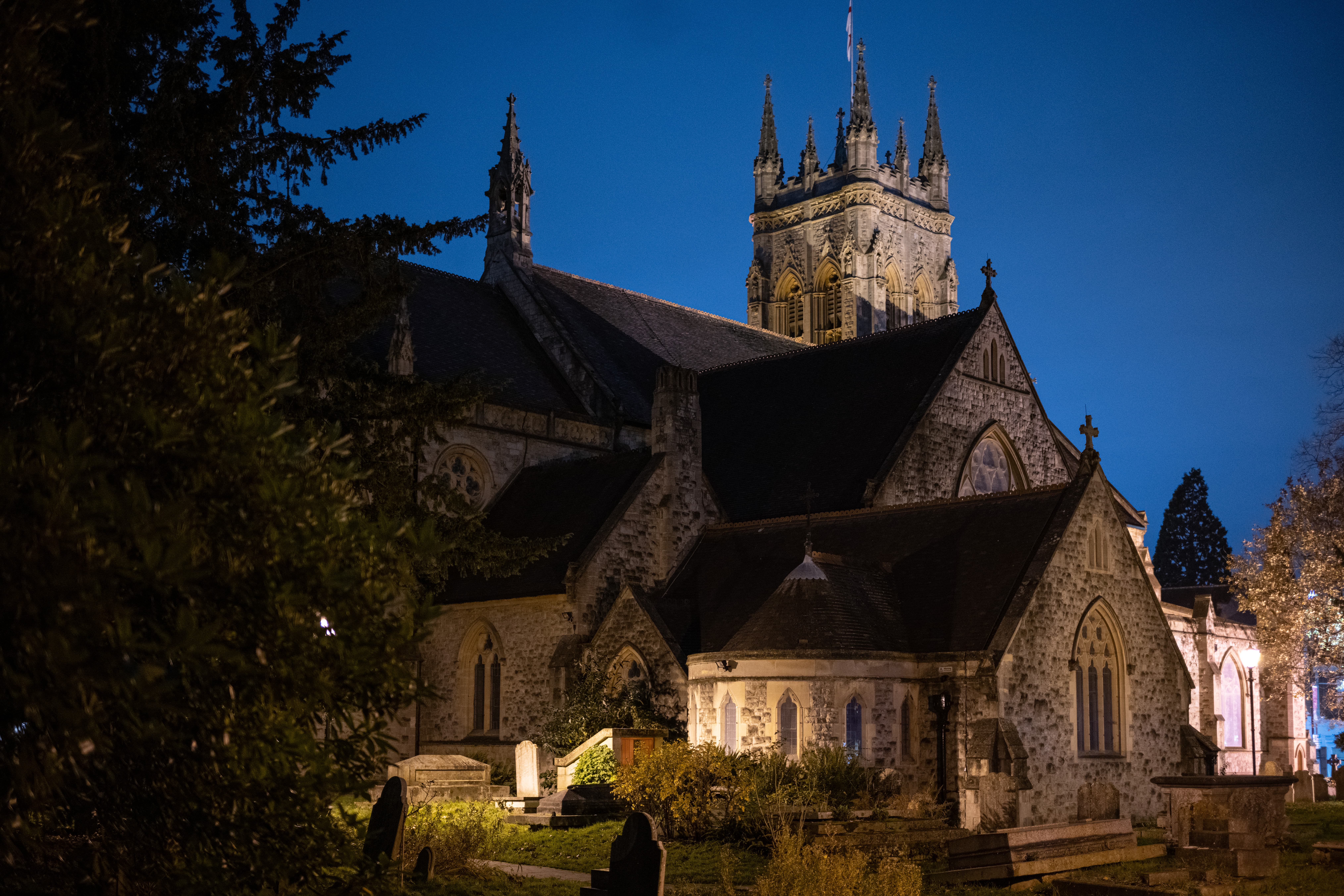
With its relatively bright f/2 aperture, the lens is useful for shooting in low light. Nikon Z7, Nikon Z 40mm f/2, 1/8sec at f/2, ISO 1600, hand-held
Stop down to f/4 and the centre and edges sharpen up very nicely; by f/5.6 the entire frame is as sharp as it’s ever going to be. At the smallest aperture of f/16 diffraction softening takes the edge off the finest detail. But even so, I wouldn’t hesitate to stop down this far when the extra depth of field is important.

Diffraction takes the edge off sharpness at f/16, but that’s no reason not to use it. Nikon Z7, Nikon Z 40mm f/2, 1/60sec at f/16, ISO 100
One area where the 40mm f/2 lags behind its more complex and expensive contemporaries comes with respect to close-up performance. Its relatively simple focusing mechanism means that it can’t maintain the same level of sharpness at short range and large apertures, giving hazy images due to spherical aberration. If you want crisp shots at less than a metre, you’ll need to stop down to f/4 at least. But then again, the close-focusing specialist Zeiss Batis 40mm F2 CF costs £1000 and is twice the length and weight, so pick your poison.

If you want crisp images at close distances, you’ll need to stop down the aperture. Nikon Z7, Nikon Z 40mm f/2, 1/60sec at f/11, ISO 100
Nikon’s in-camera processing is excellent at suppressing chromatic aberration, so you won’t see any troublesome colour fringing in your JPEG files. If you make the mistake of disabling Auto distortion control in-camera, you will see a little barrel distortion, but it’s really nothing to worry about. Likewise raw files include correction metadata for both chromatic aberration and distortion, which is automatically applied by Adobe raw conversion software.

Even in the worst-case scenarios, only a little colour fringing is visible. Nikon Z7, Nikon Z 40mm f/2, 1/50sec at f/8, ISO 4500
One aspect where the lens falls short is with regard to vignetting. Normally I don’t mind a little corner darkening; more often than not, it’s a good thing for framing your subject. But with the 40mm f/2, the fall-off pattern is quite abrupt and severe, which means it can look distracting and unattractive. I’d recommend ensuring that Vignette Control is set to Normal to suppress the effect.

Vignetting can be pronounced at f/2, with abrupt light falloff in the corners. Nikon Z7, Nikon Z 40mm f/2, 1/640s at f/2, ISO 100
On a more positive note, I saw barely any problems when shooting into the light, with minimal ghosting or loss of contrast. Stop the aperture down to f/11 or f/16, and you can get some rather nice sunstars in favourable situations. But when the sun is very bright in a clear sky, it’s also possible to get unsightly coloured mosaic artefacts.
While the lens is capable of delivering quite strongly blurred backgrounds, I’m not a huge fan of its bokeh when shot wide open at f/2. Blur circles can often to be bright-edged, and take on odd shapes towards the edges and corners of the frame. If you’re after smooth background blur, sometimes it can be better to stop down to f/2.8.

Bokeh isn’t terrible, but it’s not super-smooth either. Nikon Z7, Nikon Z 40mm f/2, 1/80sec at f/2, ISO 100
All told, though, the Nikkor Z 40mm f/2 produces very decent images, especially when you take into account its bargain price.
Nikon Nikkor Z 40mm f/2: Our Verdict
I can be tempting to overlook inexpensive lenses like the Nikon Nikkor Z 40mm f/2 and assume that with its simpler optics and plastic mount, it won’t be up to much. But in this case, that would be a huge mistake. Because while Nikon may have cut some costs in the design, it’s done so in a very sensible, well-judged way. The result is a lovely little lens that’s capable of giving fine results.
Naturally the Nikon 40mm f/2 does have its limitations, but in practice they’re relatively few and minor. And in return, its compact size and light weight mean you can happily carry it around all day, while the weather-resistant construction means you don’t have to worry about using it in unfavourable weather.
Nikon has to be applauded for being prepared to make compromises to achieve the smaller size and lower price of its compact primes; not just the 40mm f/2, but the 28mm f/2.8 as well. Over the past decade or so, manufacturers seem to have become obsessed with making large, complex and expensive lenses, in a bid to deliver corner-to-corner sharpness at all apertures and focus distances. Such optics certainly have their place, but not to the exclusion of everything else.
I’m not going to pretend that the 40mm f/2 is the best lens I’ve reviewed this year. But thanks to its combination of decent optics, reasonably bright aperture, portability and responsive AF, it’s one that I’ve really enjoyed using. In many respects it me reminds me of the Samyang AF 45mm F1.8 FE, and to get sharper optics at this size you’d have to sacrifice maximum aperture, as with the Sony FE 40mm F2.5 G.
Ultimately the Nikon Z 40mm f/2 comes highly recommended, not only to Z system users who don’t already have a native standard prime, but also to those who’d like a smaller and lighter alternative to S-line optics.

Nikon Nikkor Z 40mm f/2: Full Specifications
